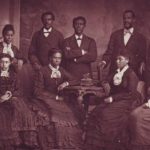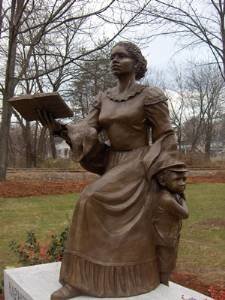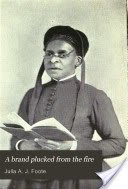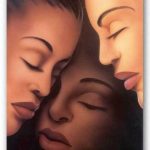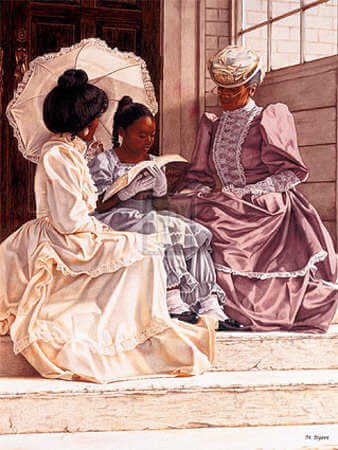African American Abolitionist and Author
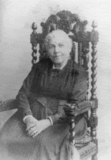 Harriet Jacobs escaped from slavery and became an abolitionist speaker and reformer. Jacobs’ single work, Incidents in the Life of a Slave Girl, published in 1861 under the pseudonym Linda Brent, was one of the first autobiographical narratives about the struggle for freedom by female slaves and an account of the sexual harassment and abuse they endured.
Harriet Jacobs escaped from slavery and became an abolitionist speaker and reformer. Jacobs’ single work, Incidents in the Life of a Slave Girl, published in 1861 under the pseudonym Linda Brent, was one of the first autobiographical narratives about the struggle for freedom by female slaves and an account of the sexual harassment and abuse they endured.
Harriet Ann Jacobs was born in 1813 in Edenton, North Carolina to Daniel Jacobs and Delilah. Daniel was a mulatto slave owned by Dr. Andrew Knox. Delilah was a mulatto slave owned by John Horniblow, a tavern owner. Harriet inherited the status of slave from her mother—if the mother was a slave, the child was a slave. That was the law.
Harriet’s childhood was a happy one. “[We] lived together in a comfortable home,” she wrote in her autobiography, “and, though we were all slaves, I was so fondly shielded that I never dreamed that I was a piece of merchandise.”
She was raised by Delilah until she died around 1819, when Harriet was six years old. She even found happiness after her mother’s death, when she moved into the home of her mother’s mistress, Margaret Horniblow—a kind woman who nurtured Harriet, and taught her to read, write, and sew.
But the happiness would not last long. In 1825, Margaret Horniblow died, and willed twelve-year-old Harriet to Horniblow’s five-year-old niece, whose father, Dr. James Norcom, became Harriet’s new master. Norcom sexually harassed Harriet for nearly a decade, but she spurned his advances.
Harriet had a consensual lover, Samuel Sawyer, a caring white man and a lawyer, who eventually became a Senator. When it was obvious that Harriet was pregnant by Sawyer, Norcom was infuriated and threatened to sell her and her child. Harriet believed “it was something to triumph over my tyrant in that small way.”
Norcom had no intention of selling her, but he threatened to sell her child if she refused his sexual advances, but she still resisted. The harassment continued even after she bore the lawyer a second child. When she learned that Norcom was preparing to put her children to work as plantation slaves, she had had enough.
 Image: Dr. Norcom’s House
Image: Dr. Norcom’s House
Edenton, North Carolina
In June 1835, at the age of 22, the abuse became too much to bear. Harriet went into hiding:
A small shed had been added to my grandmother’s house years ago. Some boards were laid across the joists at the top, and between these boards and the roof was a very small garret, never occupied by anything but rats and mice. It was a pent roof, covered with nothing but shingles, according to the southern custom for such buildings. The garret was only nine feet long and seven wide. The highest part was three feet high, and sloped down abruptly to the loose board floor. There was no admission for either light or air.
My uncle Phillip, who was a carpenter, had very skilfully made a concealed trap-door, which communicated with the storeroom. He had been doing this while I was waiting in the swamp. The storeroom opened upon a piazza. To this hole I was conveyed as soon as I entered the house. The air was stifling; the darkness total.
A bed had been spread on the floor. I could sleep quite comfortably on one side; but the slope was so sudden that I could not turn on the other without hitting the roof. The rats and mice ran over my bed but I was weary, and I slept such sleep as the wretched may, when a tempest has passed over them.
Morning came. I knew it only by the noises I heard; for in my small den day and night were all the same. I suffered for air even more than for light. But I was not comfortless.
I heard the voices of my children. There was joy and there was sadness in the sound. It made my tears flow. How I longed to speak to them! I was eager to look on their faces; but there was no hole, no crack, through which I could peep. This continued darkness was oppressive. It seemed horrible to sit in a cramped position day after day, without one gleam of light.
My food was passed up to me through the trap-door my uncle had contrived; and my grandmother, my uncle Phillip, and Aunt Nancy would seize such opportunities as they could, to mount up there and chat with me at the opening. But of course this was not safe in the daytime. It must all be done in darkness.
I bored three rows of holes, one above another; then I bored out the interstices between. I thus succeeded in making one hole about an inch long and an inch broad. I sat by it late into the night, to enjoy the little whiff of air that floated in.
In the morning I watched for my children. The first person I saw in the street was Dr. Flint. I had a shuddering, superstitious feeling that it was a bad omen. Several familiar faces passed by. At last I heard the merry laugh of children, and presently two sweet little faces were looking up at me, as though they knew I was there, and were conscious of the joy they imparted. How I longed to tell them I was there!
Samuel Sawyer had bought Harriet’s children, and they were now living in her grandmother’s house. Harriet lived in that tiny space for seven years, coming out only for brief periods at night for exercise.
In 1842, Harriet escaped by boat to Philadelphia, where she lived as a free woman. She soon moved on to New York City, where she found employment as a nursemaid in the home of abolitionist, Nathaniel Parker Willis. She worked as a nursemaid and wrote in her spare time, publishing some of her slavery experiences in the New York Tribune, then owned and edited by Horace Greeley.
Harriet was one of many escaped slaves who wrote narratives, hoping to shape opinion about the institution of slavery in the Northern United States. But her descriptions of the sexual abuse she had suffered were considered too shocking for their readers, and the newspaper stopped publishing her story.
For several years, Harriet was on the move—first to Rochester, New York, to be near her brother, who was also a fugitive slave. There she became involved with the abolitionists associated with Frederick Douglass’ paper, the North Star. She then moved back to New York, was forced to flee to Massachusetts to avoid Dr. Norcom, and finally became legally free after a friend arranged for her purchase.
Harriet had considerable difficulty in selling her finished autobiography, Incidents in the Life of a Slave Girl. She eventually signed an agreement with the Thayer and Eldridge publishing house. The publishers hired Lydia Maria Child to edit the story, and introduced Child and Jacobs. The two women would remain in contact for much of their remaining lives. Unfortunately, Thayer and Eldridge declared bankruptcy before the book could be published.
The narrative was finally published in Boston in 1861 under the pseudonym Linda Brent. Much of the book focuses on Harriet’s struggle to free her two children after she ran away. She had changed the names of all the characters in the novel to conceal their true identities, but the slave owner Dr. Flint was clearly based on her former master, Dr. James Norcom.
Harriet was actively involved with the abolition movement before the American Civil War. During the war, she used her celebrity to raise money for black refugees, and worked as a nurse. Her correspondence with Maria Child revealed her enthusiasm about the Emancipation Proclamation.
From Harriet Jacobs’ Essay Free at Last:
Reader, my story ends with freedom; not in the usual way, with marriage. I and my children are now free! We are as free from the power of slaveholders as are the white people of the north; and though that, according to my ideas, is not saying a great deal, it is a vast improvement in my condition.
The dream of my life is not yet realized. I do not sit with my children in a home of my own. I still long for a hearthstone of my own, however humble. I wish it for my children’s sake far more than for my own. But God so orders circumstances as to keep me with my friend Mrs. Bruce. Love, duty, gratitude, also bind me to her side. It is a privilege to serve her who pities my oppressed people, and who has bestowed the inestimable boon of freedom on me and my children.
It has been painful to me, in many ways, to recall the dreary years I passed in bondage. I would gladly forget them if I could. Yet the retrospection is not altogether without solace; for with those gloomy recollections come tender memories of my good old grandmother, like light, fleecy clouds floating over a dark and troubled sea.
The Thirteenth Amendment to the United States Constitution of 1865 ended slavery in America. After the war she worked to improve the conditions of the recently-freed slaves.
Harriet Ann Jacobs lived the latter years of her life in Washington, DC, where she died on March 7,1897.
SOURCES
Free at Last
Harriet Jacobs
Harriet Ann Jacobs
Incidents in the Life of a Slave Girl
